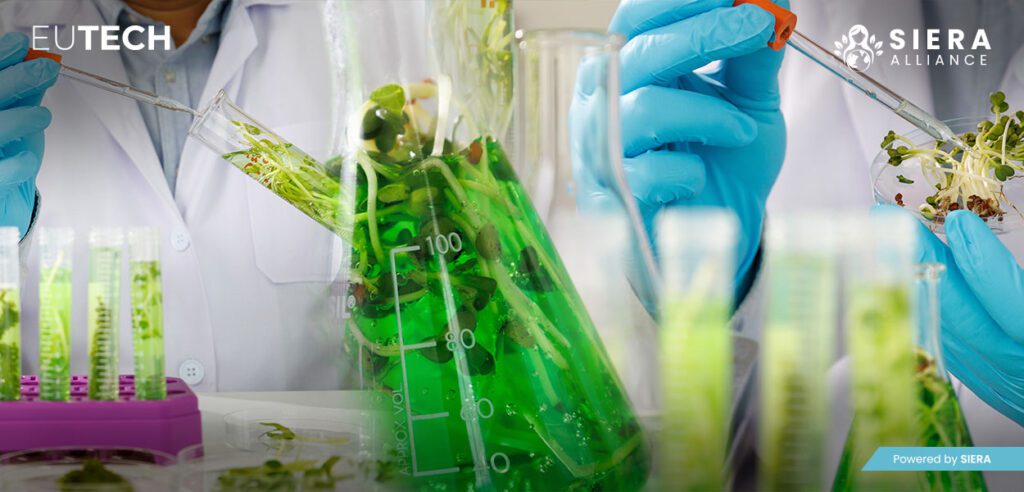Why Safety is Non-Negotiable in High-Risk Industries
The chemical and pharmaceutical industry is critical to global well-being, but it also presents significant safety challenges. From exposure to hazardous substances to outdated safety protocols, workers in these industries face numerous risks daily. Improving safety is not just about compliance—it’s about saving lives, enhancing operational efficiency, and supporting sustainability goals.
On 9th October 2024, the EUTECH – Chemical & Pharmaceutical Council powered by SIERA Alliance hosted a webinar titled “Improving Work and Safety Standards in the Chemical and Pharmaceutical Industry.” Moderated by SIERA Alliance, the session featured keynote speaker Ayushika Saraswat and panelists Prof. Tilen Čuk and Muhammad Abdullah Durrani, who explored innovative solutions to workplace safety challenges.
Key Challenges in the Chemical and Pharmaceutical Industry
The webinar addressed several critical challenges:
1. Hazardous Substances Exposure
The industry handles over 22,000 hazardous substances, including volatile organic compounds (VOCs) and active pharmaceutical ingredients (APIs). Exposure to these chemicals causes severe health risks such as respiratory issues and cancer. Nearly one million deaths annually are linked to occupational exposure globally.
2. Outdated Safety Protocols and Training
Over 36% of small and medium-sized enterprises (SMEs) lack formal safety management systems. Workers are often undertrained, particularly in handling evolving technologies, leading to increased workplace incidents.
3. High Rate of Workplace Accidents
The chemical sector reported 2.88 million non-fatal accidents in 2021, primarily caused by equipment failures and human error. This underscores the urgent need for improved workplace safety guidelines and updated infrastructure.
4. Regulatory Compliance Challenges
Compliance with evolving regulations like ESRS S1 is particularly difficult for SMEs due to limited financial and technological resources.
5. Aging Infrastructure
Many facilities in this sector are over 25 years old, relying on outdated equipment that increases the risk of accidents and inefficiencies.

Solutions and Recommendations for Enhanced Safety Standards
The panelists shared actionable strategies to tackle these challenges:
1. Implement Environmental Monitoring Technology
Adopting IoT-based monitoring systems reduces chemical spill incidents by 40%, improving compliance with EU safety regulations. For example, Bayer’s IoT-enabled chemical monitoring system to cut hazardous incidents by 35%.
2. Modernize Infrastructure
Upgrading facilities with smart grid systems and energy-efficient technologies reduces safety incidents by 35%. Modular construction techniques using low-carbon materials also align with health and safety standards.
3. Enhance Safety Training
Digital training platforms improve worker preparedness by 30%, significantly reducing human error. Cloud-based solutions, powered by AI, ensure consistent compliance with workplace safety regulations.
4. Utilize Digital Twins for Safety Optimization
Digital twin technology predicts and mitigates hazards through real-time monitoring, reducing accidents by 20%. This proactive approach minimizes risks and enhances operational efficiency.
5. Leverage Sustainable Financing
Green bonds and sustainability-linked loans enable companies to fund safety upgrades while adhering to chemical safety regulations. These financing mechanisms ensure alignment with environmental principles and safety standards.
Transformation Opportunities in Safety and Efficiency
Adopting advanced safety measures creates significant transformation opportunities:
| Transformation Area | Benefits | Impact |
| Reduced Workplace Incidents | Advanced safety systems minimize accidents, protecting workers and reducing costs. | Companies report a 25-30% drop in accidents post-implementation of safety protocols. |
| Enhanced Operational Efficiency | Improved training and digital tools streamline operations. | Reduces downtime and boosts productivity by 20-25%. |
| Stronger Regulatory Compliance | Digital monitoring ensures adherence to health and safety standards. | Avoids fines and builds trust with stakeholders. |
| Financial Resilience | Green financing supports safety and sustainability upgrades. | Attracts ESG-focused investors, boosting shareholder value by up to 15%. |

Best Practices for Workplace Safety in Chemical and Pharmaceutical Industries
- Develop Comprehensive Safety Checklists: Implement workplace safety checklists tailored to high-risk operations to ensure compliance and minimize risks.
- Conduct Regular Risk Assessments: Use data analytics to identify patterns and predict hazards, enabling proactive safety measures.
- Adopt Good Manufacturing Practices (GMP): Ensure separation of clean and non-clean areas, proper use of personal protective equipment, and stringent product integrity protocols.
- Promote a Culture of Safety: Incorporate safety as a core value across all organizational levels to foster accountability and awareness among employees.
Upcoming Events and Opportunities
Stay updated on future events hosted by the Chemical and Pharmaceutical Council powered by SIERA Alliance. For further insights into safety and compliance strategies, explore the SIERA Alliance Event Calendar. Join us in advancing safety and sustainability in high-risk industries.
Conclusion: Building Safer Workplaces for a Sustainable Future
Improving work and safety standards in the chemical and pharmaceutical industry is essential for protecting lives, enhancing operational efficiency, and achieving sustainability goals. By adopting innovative technologies, modernizing infrastructure, and fostering a culture of safety, companies can create resilient, compliant, and efficient workplaces.
Collaborating with organizations like SIERA Alliance and EUTECH enables firms to implement responsible and impactful solutions that benefit both the planet and the industry.
To learn more about how SIERA Alliance can support your journey toward safer, more sustainable operations, visit our website. Join us in building a responsible future for the chemical and pharmaceutical sector.









